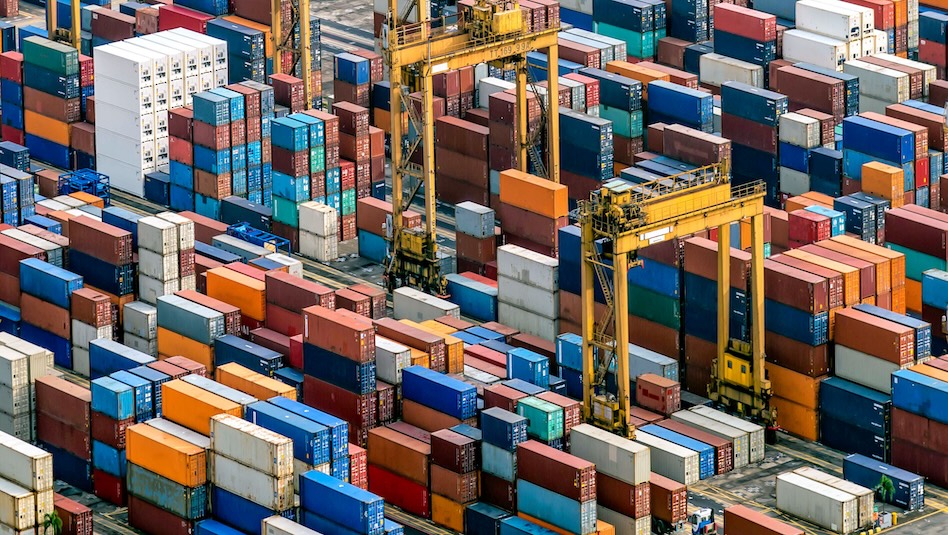




Quarterly Economic Growth Release: More BSP cuts to come
 DOWNLOAD
DOWNLOAD

Monthly Economic Update: Fed catches up
 DOWNLOAD
DOWNLOAD

Inflation Update: Steady and mellow
 DOWNLOAD
DOWNLOAD


Trade gap widens to USD 5.09 billion in Jan.

The Philippines’ trade-in-goods deficit widened to a three-month high in January as both exports and imports picked up, the Philippine Statistics Authority (PSA) reported on Friday.
The trade deficit could further worsen this year as the US trade war escalates, analysts said.
Preliminary data from the PSA showed the country’s trade balance — the difference between the values of exports and imports — ballooned to a USD 5.09-billion deficit from USD 4.14-billion deficit in December and the USD 4.36 billion gap a year earlier.
The latest figures showed the widest trade deficit in three months since the USD 5.81-billion deficit in October 2024.
PSA data showed that year on year, merchandise exports in January grew by 6.3% to USD 6.36 billion, surpassing the 6% growth projection set by the Development Budget and Coordination Committee (DBCC) this year.
Month on month, exports grew by 12.2%. This ended four straight months of export decline.
By value, it was the highest since the USD 6.75 billion in August 2024.
Imports went up by 10.8% year on year to USD 11.45 billion in January. Month on month, it grew 16.7%, ending two months of decline.
Imports growth also exceeded the 5% projection set by the DBCC. The value of imports was the highest in three months or since the USD 12 billion in October last year.
“The fact that it [electronics and semiconductors] has been negative for a number of months implies that the demand for our semiconductor, is not as hot as the newer, more powerful semiconductors in the world which is really used for AI industry,” George N. Manzano, economist from the University of Asia and the Pacific, said in a phone interview.
Electronic products, the country’s main export commodity as these account for more than half of exports in January, saw a 2.6% decline to USD 3.37 billion in January from the USD 3.46 billion in the same month in 2024.
Semiconductors, which accounts for almost 40% of total exports and three-fourths of electronic products that month, also contracted by 6.8% year on year to USD 2.52 billion.
These declines were offset by the double-digit increases seen in other manufactured goods (up by 66.6% to USD 471.07 million), coconut oil (up 80.3% to USD 249.05 million), and other mineral products (up by 33.1% to USD 247.09 million).
“The fact that our exports are also increasing, that’s also a good indicator,” Mr. Manzano said.
The United States remains the top destination of locally made goods in January, with exports valued at USD 1.13 billion, accounting for 17.7% of total export sales.
This was followed by Japan with USD 945.80 million (14.9%), Hong Kong with USD 722.81 million (11.4%), China with USD 645.57 million (10.1%), and Singapore with USD 266.48 million (4.2%).
Meanwhile, import of electronic products grew by 14.2% to USD 2.51 billion in January, while mineral fuels, lubricants and related materials went up by 7.1% to USD 1.62 billion.
Other import commodities that saw increases were transport equipment (up by 8.5% to USD 906.22 million), industrial machinery and equipment (up by 20% to USD 592.90 million), and iron and steel (up by 17.8% to USD 497.35 million).
China is still the biggest source of imports in January with USD 3.31 billion worth of goods, making up 28.9% of the total imports.
It was followed by Japan with USD 912.71 million (8% share), Indonesia with USD 892.95 million (7.8%), South Korea with USD 862.27 million (7.5%), and US with USD 690.81 million (6%).
George T. Barcelon, chairman of the Philippine Chamber of Commerce and Industry, said in a phone interview that the country’s trade deficit has been increasing over the past few years.
“Locally, we are not producing enough competitive products for the local supplier or manufacturer to serve the market. And as such, it’s cheaper to import. We have quite a big deficit with all the world but also with the ASEAN countries. So those are gaps that must be filled,” Mr. Barcelon said.
“Because every time we have a trade deficit, in other words, it translates to giving jobs to countries outside, and the jobs are not here in our country,” he added.
Mr. Barcelon also mentioned the uncertainties brought about by the looming trade war by the US government under the Trump administration.
“One of the issues on the mind of businessmen is how our trade will go, because our biggest market is still primarily North America,” he said.
“When you’re uncertain, people will not really going to be eager to invest…there is not much investment since they’re waiting whether the trade war is going to actually happen,” he added in a mix of Filipino and English.
“So that’s like the biggest thing right now in the world economy, what the US will do. Because the US is such a big buyer of our exports,” he said.
In a research note, Chinabank Research said that outlook for the industry may remain bleak this year as ongoing efforts may materialize in the long run.
Chinabank Research added that a significant risk will arise if Mr. Trump proceeds with his plan to impose 25% tariffs on semiconductors this year.
It also said that the shortfall in trade deficit “could widen further this year, with major risk coming from increased uncertainties on global trade policy, as well as Trump’s plan to impose reciprocal tariffs as the US is the top destination for Philippine exports.”
Markets are preparing for the potential impact of the trade policies by US President Donald J. Trump, such as reciprocal tariffs on all countries that tax US imports.
Mr. Trump on Thursday will impose 25% tariffs on Mexican and Canadian goods starting on March 4, along with an additional 10% duty on Chinese imports of medicines, Reuters reported. Early in February, Mr. Trump imposed 10% levy on Chinese imports. — Kenneth H. Hernandez
This article originally appeared on bworldonline.com





 By BusinessWorld
By BusinessWorld
